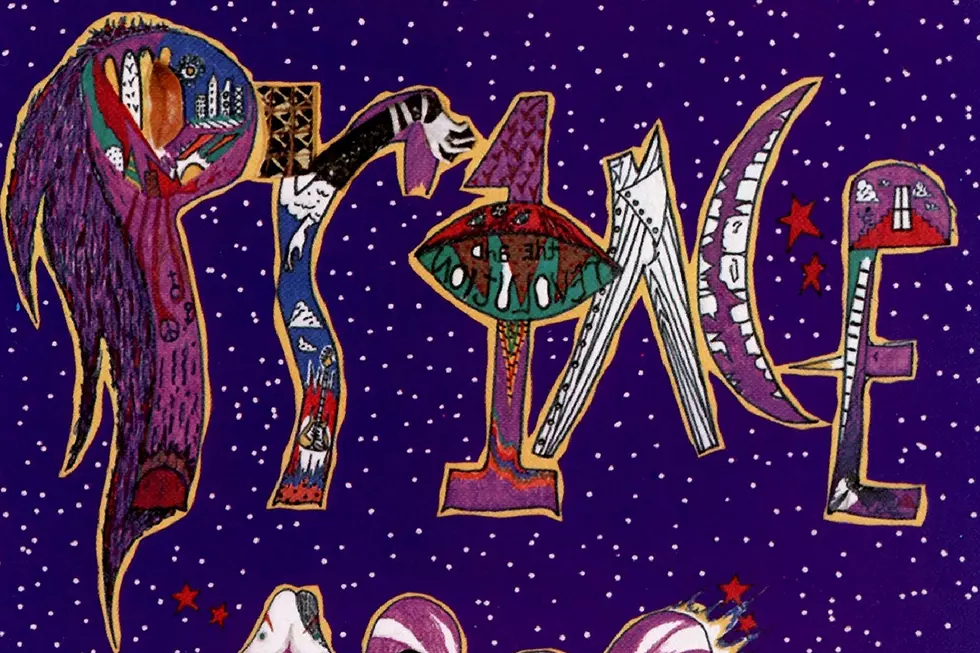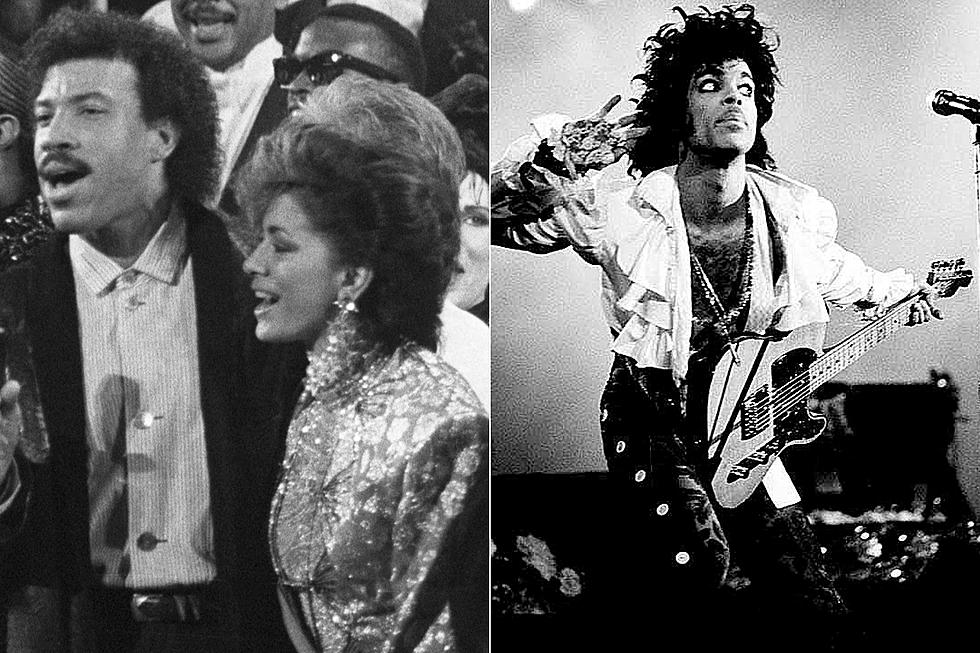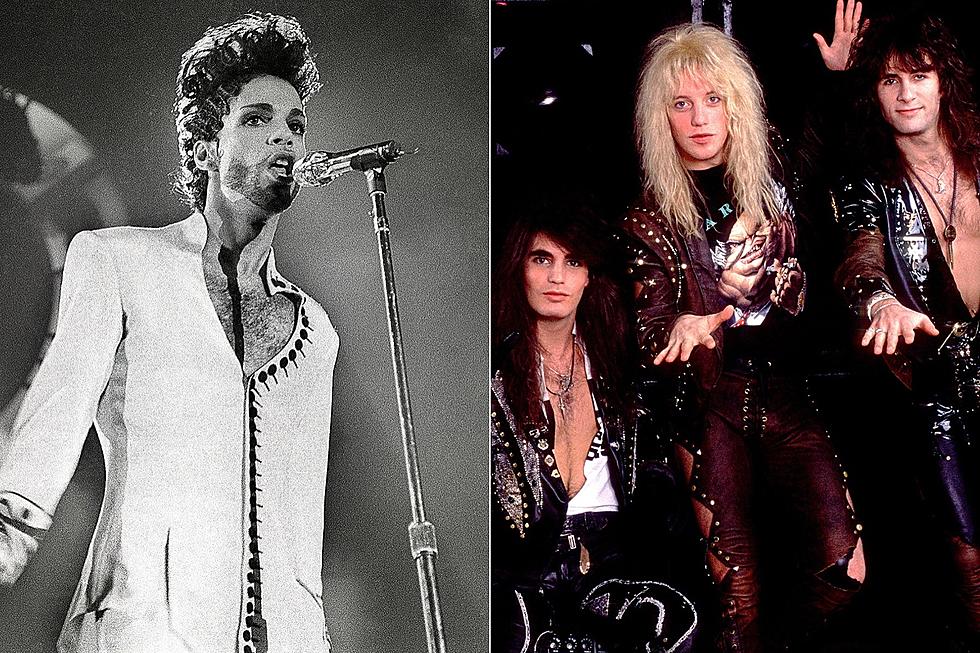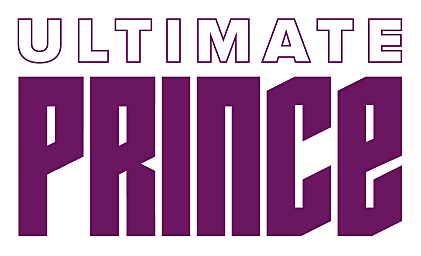
40 Years Ago: Prince Combines Sex, Synths and Doomsday on ‘1999’
In the winter and spring of 1982, Prince was playing with himself, a lot.
After releasing his fourth album, Controversy, the previous fall, the 23-year-old recording artist spent many a late night alone in his Minnesota home studio. Creating and recording dance tracks, rockers and ballads as quickly as the inspiration struck, he would soon have enough material for a double LP.
“I didn’t want to do a double album, but I just kept writing and I’m not one for editing,” Prince told the Los Angeles Times in 1982. “I like a natural flow. I always compare songwriting to a girl walking in the door. You don’t know what she’s going to look like, but all of a sudden she’s there.”
The “girls” kept arriving as Prince toiled in the small, but well-appointed, studio he had installed inside his split-level home in Chanhassen, Minn. (before the days of Paisley Park). In the middle of the night, he would beckon his touring drummer Bobby Z. to come collaborate with him. As Bobby became less likely to appear on command at 3AM, Prince turned to a drum machine – a Roger Linn model that he had purchased the previous year.
Watch Prince Perform '1999'
He had already been merging R&B, rock, dance, funk and pop in his music. Now, his new songs became infused with the latest in technology, not only the Linn machine, but also lots of synthesizers. Always one to perform nearly everything for his records alone, Prince took to the gizmos because of the speed at which he could work (he could program a new beat in a few seconds) and the variety of sounds he could produce.
As recording sessions continued into the summer, when the new science-fiction film Blade Runner was released, the movie buff incorporated the flick’s “future noir” style and themes into his music. The benefits and ramifications of technology, as seen in the film, appeared to be on Prince’s mind. He also seemed to groove on the film’s score, a haunting and pulsing work crafted on synthesizers by Vangelis.
Notions of the future became a touchstone on the album that would turn into 1999, including the title track (more on that later) as well as “Something in the Water (Does Not Compute).” Prince wasn’t just using new technology to create otherworldly sonic textures on the recording, he was combining a tried-and-true “my baby treats me bad” vamp with references to computers.
The singer wouldn’t stop at merging circuit boards and sex. On his fifth album, Prince would employ other metaphors for carnal pleasure, including horses, airplanes (“International Lover”) and, of course, a “Little Red Corvette.” Prince wrote that catchy number (his breakout hit) not in a red Corvette, but in a pink Mercury Montclair Marauder that belonged to touring keyboardist/singer Lisa Coleman.
“I bought this vintage pink Mercury at a car auction,” she told The Guardian in 2008. “It was so bitching-looking that Prince used to borrow it and dent it, which I’d make him feel bad about. He slept in it one time and came up with ‘Little Red Corvette’... even though it was a pink Mercury.”
Watch Prince Perform 'Little Red Corvette'
In between dreams, the singer jotted down lines to the tune, which explores the complications of sex. It’s not clear if he was also dreaming when he wrote “1999,” as claimed in the lyrics of the funky pop classic. Prince came up with the song (recorded in August at Sunset Sound in Los Angeles on the same day as “Little Red Corvette”), after his managers suggested that this substantial double album needed another tune – something that could introduce the record and incorporate some of its themes.
“We were sitting around watching a special about 1999, and a lot of people were talking about the year, speculating on what was going to happen,” Prince told Larry King in 1999. “I just found it real ironic how everyone that was around me, whom I thought to be very optimistic people, were dreading those days. And I always knew I’d be cool. I never felt like this was going to be a rough time for me. I knew that there were going to be rough times for the Earth, because this system is based in entropy and it’s pretty much headed in a certain direction. I just wanted to write something that gave hope.”
“1999” was a song with a message about living in the moment, stop worrying and love… well, if not the bomb, at least the party before Judgement Day. It includes a nod to Prince’s trademark color (“The sky was all purple”), based on a vision of a beautiful blue sky becoming crowded with red blood and fury. It’s also one of the few tunes on the 1999 album to include notable contributions from his backing band. Lead vocals are shared between Prince, guitarist Dez Dickerson and backing singers Coleman and Jill Jones.
“The song was going to be sung in a three-part harmony like a Sly and the Family Stone song,” Prince said. “We all got together and we started singing it, and it wasn’t really working. So what I did is I said, ‘All right, you sing your harmony for the first part, then you sing your harmony for the second and I’ll sing my harmony for the third.’ And it broke – when that breakup happened like that, and everybody got their parts separated, then I knew we had something real special.”
In the midst of Prince’s dance-party protest of the atomic threat, he also finds time for sexual innuendo (“I got a lion in my pocket / And, baby, he’s ready to roar”). He’d be more direct in other parts of the album, whether referencing masturbation on the sarcastic “All the Critics Love U in New York” or getting downright aggressive on “Let’s Pretend We’re Married” (in which he declares, “I sincerely wanna f--- the taste out of your mouth”)
The dark side of the party isn’t only reflected in the doomsday dance of “1999,” but in between many of the synth-spiked grooves on this album which deal in both pleasure and pain (such as “Automatic,” which more than suggests S&M in its video, which MTV avoided). There’s more than a hint of menace amid the ecstasy.
Watch Prince Perform 'Automatic'
“Sex is something we can all understand. It’s limitless,” Prince said in 1982. “My goal is to excite and provoke on every level. ... The most important thing is to be true to yourself, but I also like danger. That is what is missing from pop music today.”
Upon 1999’s release on Oct. 27, 1982, music fans seemed to agree that Prince was doing something more exciting than many of the current pop stars. Despite Warner Bros. Records’ trepidation about putting out a double album by an artist that was not in the blockbuster realm, the two-disc set became Prince’s breakthrough release. It hit No. 9 on the Billboard album chart and became his first big-seller in Canada and the U.K. 1999 eventually went platinum four times over, boosted by smash singles “Little Red Corvette” (No. 6, Prince’s first Top 10), “Delirious” (No. 8) and “1999” (No. 12) and their accompanying hit videos on MTV.
Prince didn’t only want to create a revolution, he wanted to front it. On the precipice of Christening his backing band the Revolution in 1982, he had second thoughts (likely caused by the possible departure of Dickerson due to religious reasons) and instead included “and the Revolution” in backwards script on the album cover for 1999. The Revolution would not be formalized until 1984, when guitarist Wendy Melvoin (who also sang a little on 1999) joined keyboardist Coleman, drummer Bobby Z., bassist Brown Mark, keyboardist “Dr.” Matt Fink and, of course, Prince.
Although 1984’s Purple Rain would take Prince (and the Revolution) to a new level of stardom, 1999 remains the singer’s second-most-popular studio album. Even though the futuristic title track is now tied to the past, “1999” remains a hallmark of pop culture, having landed on the charts again in 1999 and after Prince’s death in 2016. The 1999 album also re-charted after the singer’s surprising demise, besting its original position by rising to No. 7 in the U.S. Life wasn’t over, but Prince’s was, and his fans were still eager to party like it was 1999.
More From Ultimate Prince










